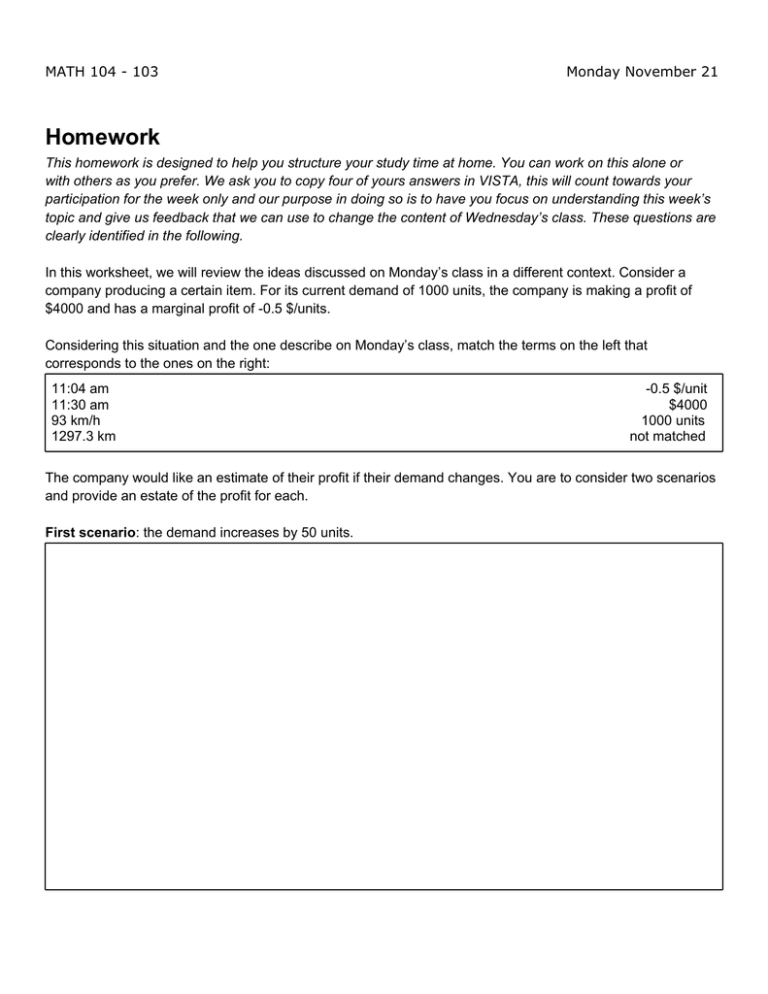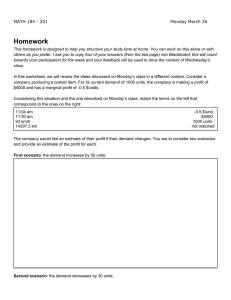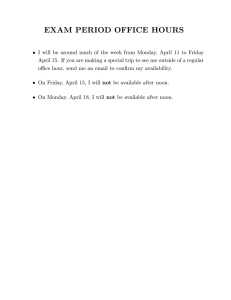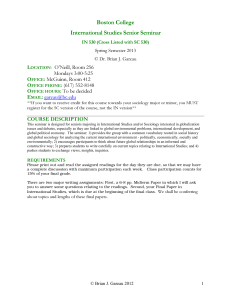Homework
advertisement

MATH 104 - 103 Monday November 21 Homework This homework is designed to help you structure your study time at home. You can work on this alone or with others as you prefer. We ask you to copy four of yours answers in VISTA, this will count towards your participation for the week only and our purpose in doing so is to have you focus on understanding this week’s topic and give us feedback that we can use to change the content of Wednesday’s class. These questions are clearly identified in the following. In this worksheet, we will review the ideas discussed on Monday’s class in a different context. Consider a company producing a certain item. For its current demand of 1000 units, the company is making a profit of $4000 and has a marginal profit of -0.5 $/units. Considering this situation and the one describe on Monday’s class, match the terms on the left that corresponds to the ones on the right: 11:04 am 11:30 am 93 km/h 1297.3 km -0.5 $/unit $4000 1000 units not matched The company would like an estimate of their profit if their demand changes. You are to consider two scenarios and provide an estate of the profit for each. First scenario: the demand increases by 50 units. Second scenario: the demand decreases by 30 units. Generalize your above computations and find a formula to compute which is the estimated profit for a demand of q units given the information known at the current demand of 1000 units. Draw a set of axis with the horizontal axis representing units and the vertical axis representing dollars and then represent on it the following: ● the known information about the company at its current demand of 1000 units, ● your estimated profit for each of the two scenario considered, ● the line connecting those points. What is the equation of the line you drew above? Out of your two estimates of profit, which one are you more confident in and why? The following are questions asked on VISTA. Copy your answers there when done. How does this relate to the formula of that you found earlier? What additional information would help us quantify the maximal potential error made in your estimate? Looking back at the work you did during Monday’s class on the moving car, we discussed that it is unknown how accurate our linear approximation guess is. What additional information at 11:04 am would give us an estimate on the size of our error? Explain in your own words why we call the estimation process a linear approximation.







